First appearance September 24, 1981. | ||
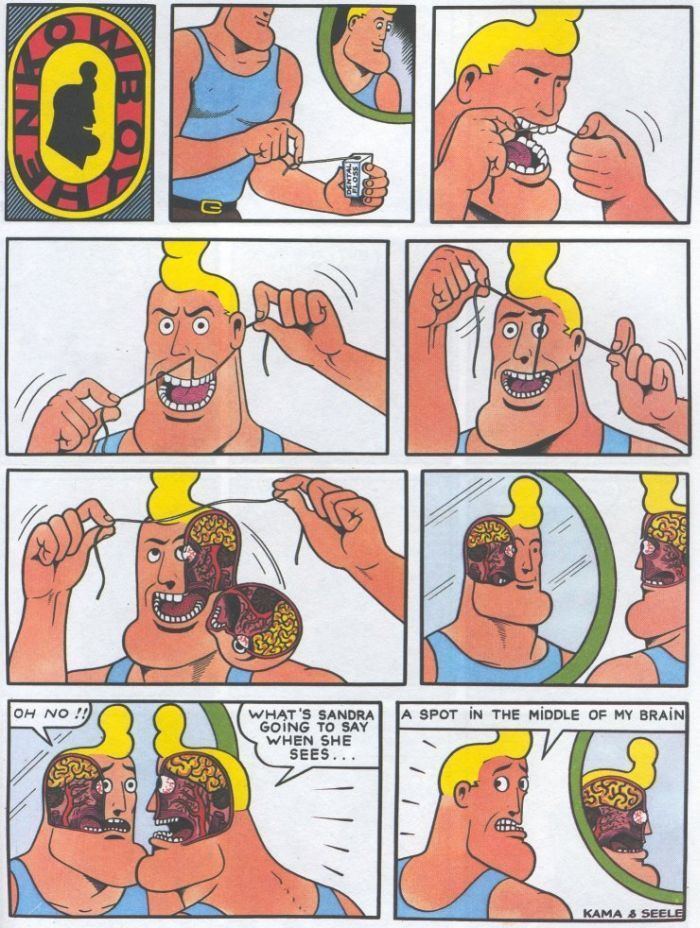 | ||
Publisher HUMO (Belgium). Published by Loempia, Kritak, De Bezige Bij and Standaard Uitgeverij. | ||
Cowboy Henk is a Belgian absurd humor/surreal humour gag-a-day comic strip series, drawn by Herr Seele and written by Kamagurka. It was originally published in the newspaper De Morgen, but later taken over by the magazine HUMO in which it is still published today and for whom Henk is now their mascot. The series was in continuous syndication from 1981 until 2011. After the brief interruption it was continued again in the spring of 2013.
Contents
- Herr seele veilt een cowboy henk schilderij voor het goede doel
- History
- Character
- Style
- In other media
- Award
- In popular culture
- Regular albums
- Compilation albums
- References

Herr seele veilt een cowboy henk schilderij voor het goede doel
History

In 1981 Kamagurka published a one-album-only long comic story named : Mijnheerke Plagiaat ("Mister Plagiarism"), in the Belgian newspaper Vooruit (later De Morgen). At the end of the story the comics character Mr. Plagiaat decided to think up a comic character of his own, whom he named Cowboy Henk, contrary to Zorro. On September 24, 1981 the first Cowboy Henk gag appeared in print. Kamagurka wrote the jokes and dialogues while his friend, Herr Seele, drew the stories.
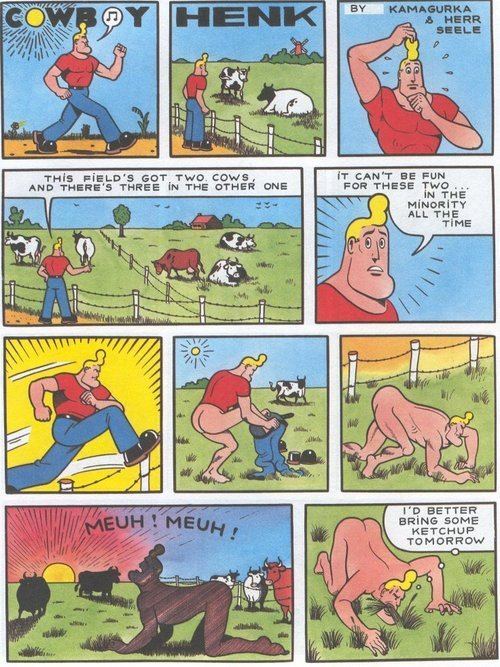
Originally Cowboy Henk appeared in black-and-white as a gag-a-day comic of only four to six panels per episode. Sometimes he had adventures spread over more pages too. De Morgen received many angry letters from readers who complained about the style of comedy. In Flanders Cowboy Henk was published exclusively in the magazine HUMO from 1982 until 2011, usually as a single page gag-a-day page. He also appeared on many magazine covers, thus becoming one of HUMO 's official mascots. In October 2011, after nearly 20 years of continuous publication, the series was no longer published in HUMO and disappeared without fanfare. According to the redaction the series hardly got any reactions from readers anymore, even when publication was ceased. From that moment on until 2012 Seele drew the short-lived black-and-white comic strip Dikke Billie Walter ("Fat Billie Walter"), with Kamagurka as script writer. On April 10, 2013, the Flemish radio station Studio Brussel interviewed Seele and he announced Henk's comeback in HUMO. The character indeed reappeared. First as a gag cartoon, spread over an entire page and making topical comedy, later as a parody comic strip series of Belgian history until finally back in its old form as a comic strip.
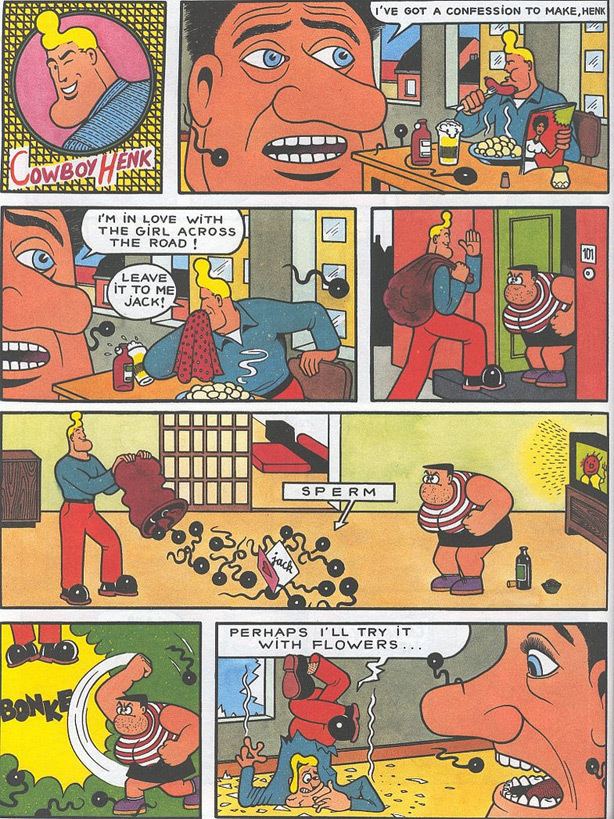
The series has been translated in French (as Cowboy Maurice), Spanish and English in magazines such as L'Echo des Savanes and RAW. In The Netherlands the comics are published in Vrij Nederland.
Character
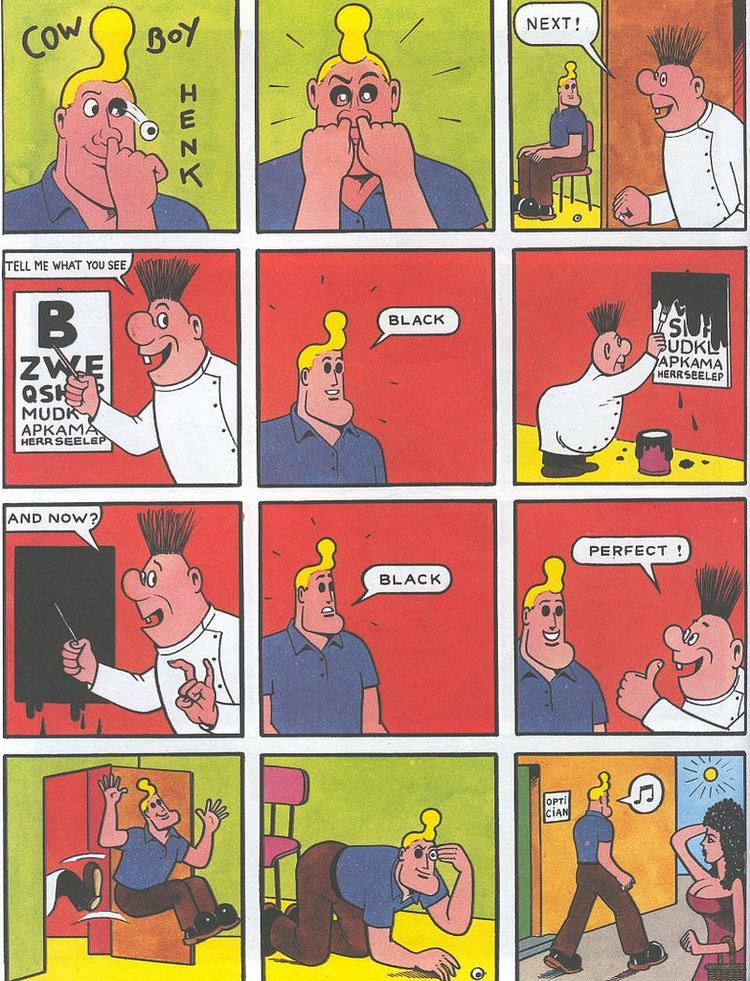
Cowboy Henk is a muscular adult male with a characteristically brawny chin and a long yellow quiff which, according to the jubilee story De Bananenkuif (2001) is made from bananas. Usually Henk wears a white T-shirt with short sleeves, blue pants and black shoes with round noses. In his first gags Henk was a real cowboy, which explains his name.
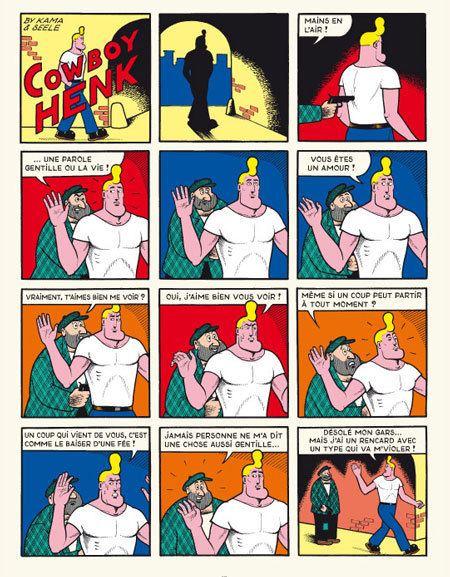
Henk is a flat character and completely unpredictable. He often behaves very bizarre, but the world around him is also very surreal. He often reacts calmly to all the madness around him, but can get aggressive and even violent at times. Sometimes Henk behaves like a naïve child still living at his mother's place and going to school. In other gags he behaves more like an adult by going to work or experiencing with sex and drugs. Since Henk has had sex with both men and women in his cartoons we can conclude he is bisexual. He has no stable profession, despite the fact that some successive gags depict him as a journalist, hairdresser or a painter.
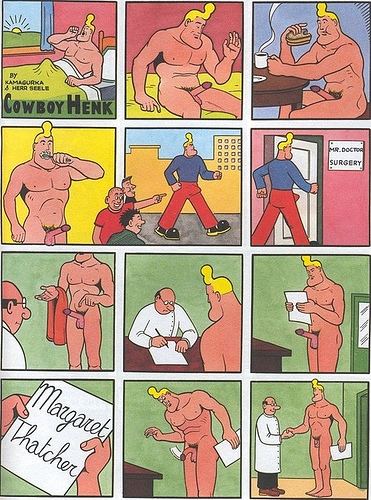
Henk is also the only recurring character. Other side characters only appear in a few gags, then disappear again.
Style
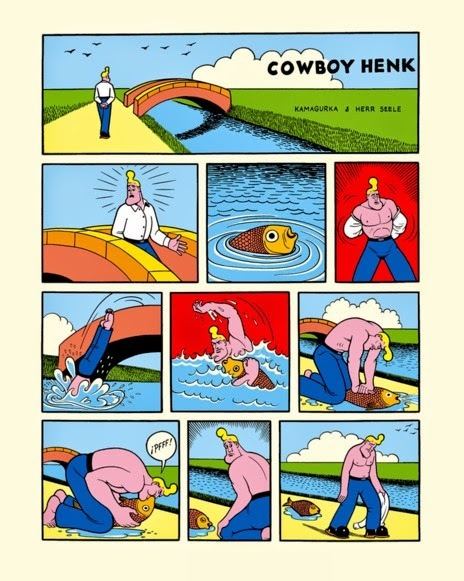
Much like Kamagurka's other comics and cartoons Cowboy Henk is an absurd humor comic strip series, aimed at adults. Herr Seele told in interviews that Zippy the Pinhead by Bill Griffith was a major inspiration. Some Cowboy Henk gags have an almost child friendly atmosphere while others are full of shocking dirty jokes, toilet humour and/or black comedy. Because of the simple, naïve drawing style the series have been read by many children in HUMO over the years. This led to several angry letters by parents who complained about the child unfriendly vulgarities in the comic strip.
In other media
In Kamagurka and Seele's comedy TV series Lava and Johnnywood sometimes short animated cartoons featuring Henk were seen, with Seele voicing his character. He also performed Cowboy Henk (with a yellow quiff tied to his bald head) while Kamagurka told Henk's surreal adventures to the audience. In their radio show Studio Kafka they also made audio plays about Henk.
Award
The series won the 2014 Prix du Patrimoine at the Angouleme International Comics Festival.
